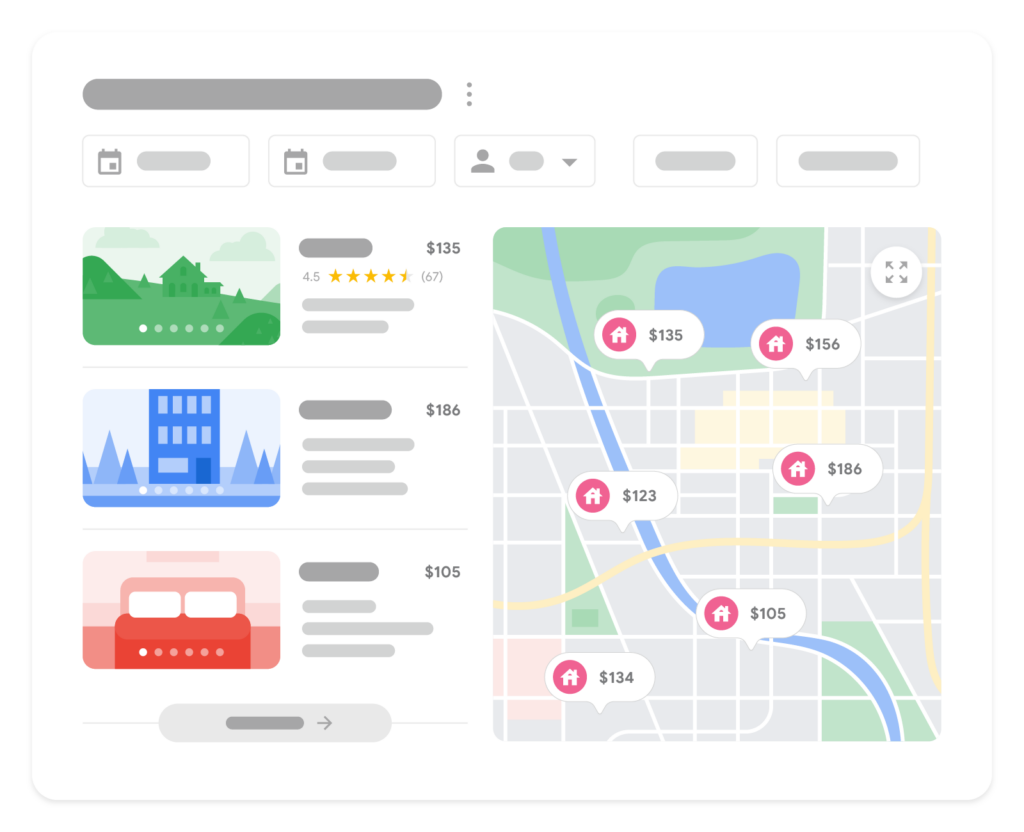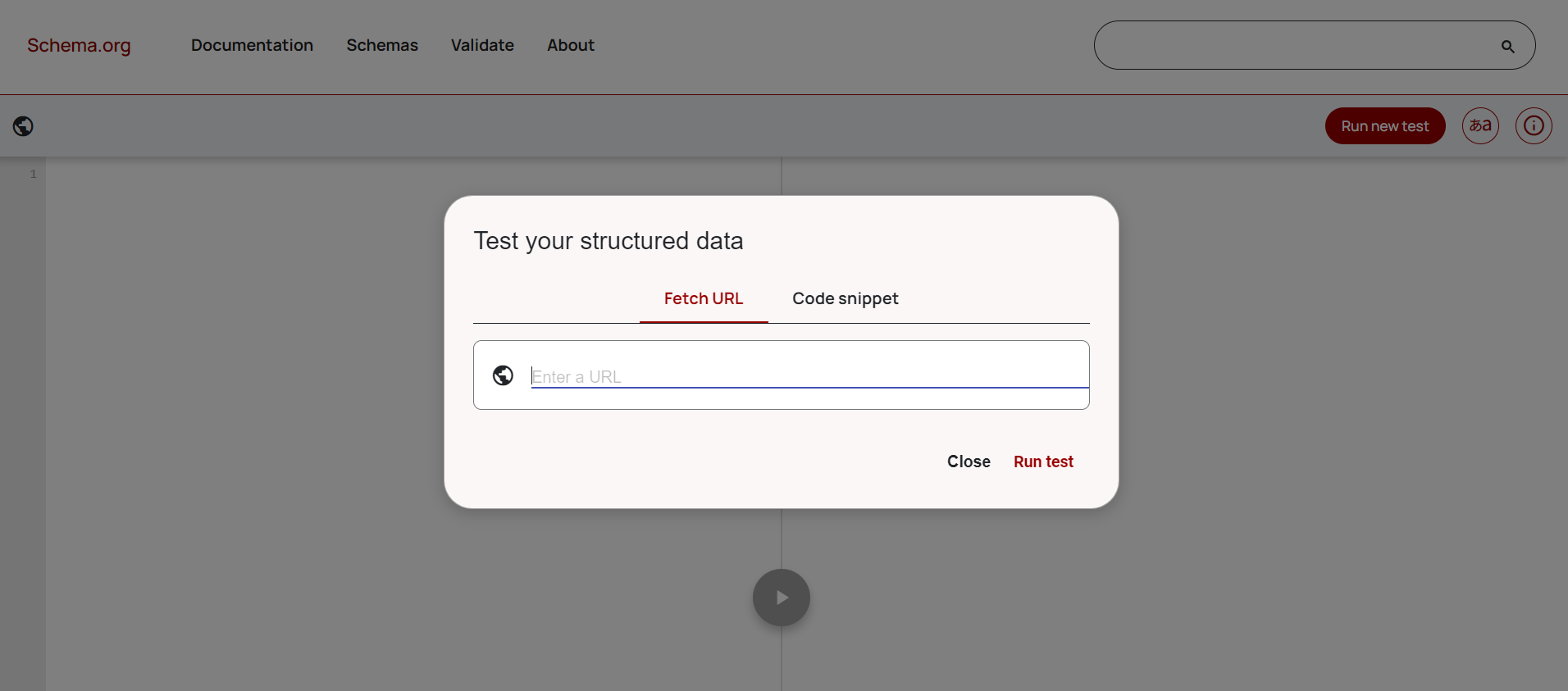What is Schema Markup?

Schema markup, also known as structured data, is a type of code that you can add to your web pages to help search engines understand your content better. It provides search engines with more information about the content, context, and significance of your page, such as the relationships between different parts of data and their relevance to search queries. This additional information can help search engines display your content in a rich format, such as including images, star ratings, review counts, and more directly in search results.
Like this:

Why is Schema Markup Important for SEO?
Schema markup is not a direct SEO ranking factor, but it can indirectly boost your search rankings in several ways:
- Enhanced Search Listings: Schema markup leads to rich snippets that display additional information like ratings and reviews, making listings more attractive and increasing click-through rates (CTR).
- Improved CTR: Higher CTRs from rich snippets signal to search engines that your content is valuable and relevant, potentially improving your search rankings.
- Better User Experience: Detailed and structured information in search results enhances user experience, leading to lower bounce rates and higher engagement, which can indirectly boost rankings.
- Voice Search Optimization: Schema markup ensures that your content is correctly interpreted by voice assistants, improving visibility and traffic from voice search.
- Increased Relevance: Schema markup helps search engines understand the context of your content better, making your pages more likely to match relevant user queries and enhancing search positions over time.
Types of Schema Markup
Schema markup comes in various types, each designed to provide specific information to search engines about the content on your web pages.
Here are the names of different types of schema markup:
-
- Article
- Book
- Breadcrumb
- Event
- FAQ
- HowTo
- Job Posting
- Local Business
- Organization
- Person
- Product
- Recipe
- Review
- Software Application
- Video
Google schema markup isn’t limited to just these; there are many more types available. The best schema for a company depends on the industry. We will discuss the most common types of schema markup.
Organization Schema Markup
-
- Organization markup provides Google with detailed information about an organization.
- This markup provides detailed information about a business or organization, such as its name, address, contact details, logo, and more.
- Using organization schema markup can enhance the way your site appears in search engine results, potentially leading to better visibility and higher click-through rates.
Key Elements of an Organization Schema
- Name: The official name of the organization.
- URL: The organization’s website URL.
- Logo: A URL pointing to the organization’s logo.
- Contact Information: Phone number, email address, and physical address.
- Social Media Profiles: Links to the organization’s profiles on social media platforms.
- Founding Date: The date the organization was founded.
- Founders: Names of the people who founded the organization.
- Description: A brief description of the organization.
- Address: The physical location of the organization, including street address, city, state, and postal code.
- Departments: Sub-units or departments within the organization.
An organization rich snippet can look like this:

Here’s an example of how the code for an Organization schema markup might look.
Article Schema Markup
- Article schema markup provides Google with detailed information about the content of an article, including the title, featured image, author, and publish date.
- This structured data helps improve the visibility of your articles in search results, leading to better search engine optimization (SEO) and increased engagement from users.
Key Elements of an Article Schema
- Headline: The title of the article.
- Author: The person or entity that wrote the article.
- Date Published: The date the article was originally published.
- Date Modified: The date the article was last modified.
- Article Body: The main content of the article.
- Image: An image associated with the article, often used as a thumbnail.
- Publisher: The organization or person responsible for publishing the article.
- Description: A brief summary or excerpt of the article.
- Keywords: Relevant keywords or tags associated with the article.
- Main Entity: The primary topic or focus of the article.
An article rich snippet can look like this:

Here’s an example of how the code for an article schema markup might look.
Breadcrumb Schema Markup
Breadcrumb schema markup is structured data that helps search engines understand and display your website’s hierarchical content. Breadcrumbs show users the path to a specific page, improving navigation by providing links back to previous pages.
Key Elements of Breadcrumb Schema Markup
- @type: Specifies that the type of data is a breadcrumb list.
- Item List Element: Contains the list of breadcrumb items, each representing a step in the path.
- Position: Indicates the position of the breadcrumb in the list.
- Name: The name of the breadcrumb (usually the title of the page).
- Item: The URL of the breadcrumb.
A breadcrumb rich snippet can look like this:

Here’s an example of how the code for a breadcrumb schema markup might look.
Course Schema Markup
Course schema markup is structured data that provides detailed information about educational courses, helping search engines understand and display course content accurately. This improves the visibility of your courses in search results.
Key Elements of Course Schema Markup
-
- @type: Specifies that the data is a Course.
- Name: The name of the course.
- Description: A brief summary of the course content.
- Provider: Information about the organization offering the course.
- Course Mode: The mode of delivery (e.g., online, offline).
- Duration: The length of the course.
- Start Date: The date the course begins.
- End Date: The date the course ends.
- Instructor: Information about the person teaching the course (optional).
A course rich snippet can look like this:

Here’s an example of what the code for a course schema markup might look like.
Product Schema Markup
Adding product markup allows users to see the price, availability, review ratings, shipping information, and more directly in search results. This is particularly useful for e-commerce stores, as it provides potential customers with a detailed view of the product before they even visit your website.
Key Elements of Product Schema Markup
- @type: Specifies that the data is a Product.
- Name: The name of the product.
- Description: A brief summary of the product.
- Image: A URL to an image of the product.
- Brand: The brand of the product.
- SKU: The Stock Keeping Unit (SKU) of the product.
- Offers: Information about the offer, including price, currency, availability, and seller.
- Aggregate Rating: The overall rating is based on multiple ratings or reviews (optional).
- Review: Individual reviews of the product (optional).
A product rich snippet can look like this:

Here’s an example of what the code for a product schema markup might look like:
Review Schema Markup
Review schema markup is structured data that provides detailed information about reviews. Implementing this markup helps search engines understand and display review content accurately, improving the visibility and credibility of your reviews in search results.
Key Elements of Review Schema Markup
- @type: Specifies that the data is a Review.
- Author: The person or entity who wrote the review.
- Date Published: The date the review was published.
- Description: The text of the review.
- Item Reviewed: The item that is being reviewed.
- Review Rating: The rating given in the review.
A review rich snippet can look like this:

Here’s an example of what the code for a product schema markup might look like:
Three Methods for Implementing Schema Markup
There are three main types of schema encoding, often referred to as schema markup. These encodings help structure data on web pages, making it understandable by search engines. The three types are:
- JSON-LD: Preferred for its simplicity and separation from HTML content.
- Microdata: Directly embedded in HTML, which can complicate the HTML structure.
- RDFa: More versatile and can be used for various types of structured data beyond schema.org.
JSON-LD (JavaScript Object Notation for Linked Data):
- Description: JSON-LD is a lightweight syntax to serialize linked data. It’s embedded in the HTML document within a <script> tag.
- Usage: Preferred by Google and recommended for its simplicity and separation from the HTML content.
- Example:
- Microdata:
-
- Description: Microdata is an HTML specification used to nest metadata within existing content on web pages. It uses HTML tag attributes to define properties.
- Usage: Embedded directly in the HTML content, which can make the HTML more complex and harder to read.
- Example:
- RDFa (Resource Description Framework in Attributes):
- Description: RDFa is an extension to HTML5 that helps markup metadata within web documents. It uses HTML attributes to carry metadata.
- Usage: Similar to Microdata, RDFa is embedded in HTML, but it provides more versatility and can be used for various types of structured data beyond schema.org.
- Example:
- Best Practices to Optimize Your Website for Rich Snippets
- Implement Structured Data Markup:
-
-
- Use JSON-LD: Preferred by Google for its simplicity and separation from HTML content.
- Use Schema.org: Ensure you use the appropriate schema types for your content (e.g., Article, Product, Review).
-
- Ensure Markup Completeness:
-
-
- Include all required properties for each schema type.
- Add recommended properties to provide as much context as possible.
-
- Validate Your Structured Data:
-
-
- Use Google’s Rich Results Test: Check for errors and warnings in your structured data.
- Use Schema Markup Validator: Ensure your markup follows schema.org guidelines.
-
- Keep Data Accurate and Up-to-Date:
-
-
- Regularly update structured data to reflect changes in content, such as new reviews or updated prices.
- Ensure that dates, ratings, and availability are current.
-
- Provide High-Quality Content:
-
-
- Create detailed and informative content that provides real value to users.
- Use high-quality images and ensure they are properly tagged in your schema markup.
-
- Optimize for Mobile:
-
-
- Ensure your website is mobile-friendly, as rich snippets can appear in mobile search results.
- Use responsive design techniques to improve the user experience on mobile devices.
-
- Enhance Page Load Speed:
-
-
- Optimize images, enable browser caching, and minimize JavaScript to improve page load times.
- Use tools like Google PageSpeed Insights to identify and fix performance issues.
-
- Use Descriptive URLs and Meta Tags:
-
-
- Ensure URLs are clean and descriptive.
- Optimize meta titles and descriptions to align with the content and structured data.
-
- Monitor and Analyze Performance:
-
-
- Use Google Search Console to monitor the performance of rich snippets and identify any issues.
- Analyze the impact of rich snippets on click-through rates (CTR) and user engagement.
-
- Follow Google’s Guidelines:
-
- Adhere to Google’s structured data guidelines to avoid penalties.
- Avoid spammy practices such as keyword stuffing or providing misleading information.
- By following these best practices, you can optimize your website for rich snippets, enhancing its visibility in search results and improving user engagement.
- How to Validate Your Schema Markup
-
- Validating your schema markup is crucial to ensure search engines can correctly interpret and utilize your structured data. Here’s how you can do it:
- Google’s Rich Results Test:

-
-
-
- Navigate to Google’s Rich Results Test.
- Enter the URL of the page you want to test or paste your code directly.
- Click “Test URL” or “Test Code.”
- Review the results to identify any errors or warnings. Correct any issues and re-test until the markup is error-free.
-
-
- Schema Markup Validator:

-
-
-
- Use the Schema Markup Validator, an official tool from Schema.org.
- Enter your webpage URL or paste your markup code.
- Click “Run Test” to see detailed results.
- Fix any errors or warnings highlighted by the tool, ensuring your structured data follows schema.org guidelines.
-
-
- Google Search Console:
-
-
- Verify your website in Google Search Console.
- Navigate to the “Enhancements” section to see structured data reports.
- Check for any detected issues with your schema markup.
- Follow the recommendations to fix any errors and monitor the status regularly.
-
- Regular validation helps maintain accurate and effective schema markup, improving your chances of generating rich snippets in search results.
- Conclusion
-
- Schema markup is a powerful tool for enhancing your website’s visibility in search results. By implementing various types of schema markup, such as Organization, Article, Breadcrumb, Course, Product, and Review, you can provide search engines with detailed information about your content. Following best practices, validating your markup, and keeping your data up-to-date can improve your chances of generating rich snippets, leading to better user engagement and higher click-through rates. Regularly monitor and analyze performance to ensure your structured data continues to benefit your SEO efforts.

